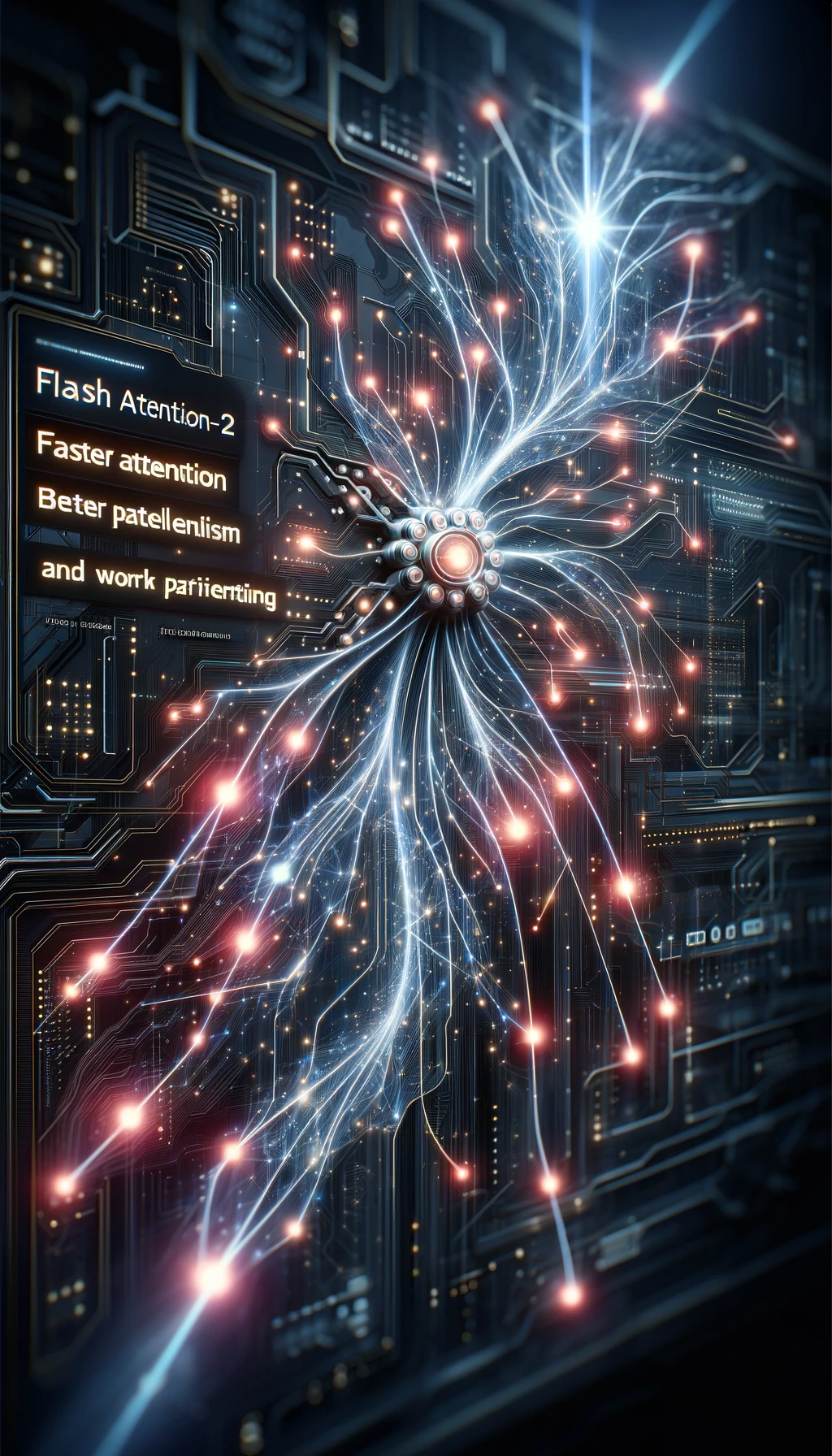Key Points
1. The paper addresses the challenge of scaling Transformers to longer sequence lengths, impacting performance in language modeling, image understanding, audio-visual generation, code, and more.
2. FlashAttention reduces memory usage and speeds up the attention layer, but falls short compared to optimized matrix-multiply operations in terms of efficiency.
3. The paper proposes FlashAttention-2, which offers better work partitioning and parallelism, resulting in around 2-3x speedup over FlashAttention.
4. FlashAttention-2 significantly speeds up the training of GPT-style models, reaching up to 225 TFLOPs/s per A100 GPU with 72% model FLOPs utilization.
5. The research considers the performance characteristics and execution model of GPUs, including the memory hierarchy and multithreading.
6. FlashAttention-2 presents promising results in terms of training speed and efficiency, laying the groundwork for future optimizations targeting different devices and data types.
Summary
The research paper focuses on addressing the challenge of scaling up the context length of Transformers. It highlights the significant bottleneck in scaling to longer sequences due to the quadratic increase in runtime and memory requirements of the attention layer. The paper introduces FlashAttention and its drawbacks, which although yields significant memory saving and runtime speedup, is not as efficient as optimized matrix-multiply (GEMM) operations. The proposed solution, FlashAttention-2, aims to improve work partitioning and reduce non-matmul FLOPs, enabling around 2× speedup compared to FlashAttention. FlashAttention-2 achieves up to 73% of the theoretical maximum FLOPs/s on A100 and significantly speeds up training of GPT-style models, reaching up to 225 TFLOPs/s per A100 GPU. The paper also discusses the GPU performance characteristics, the execution model, and the implementation of FlashAttention and FlashAttention-2.
Moreover, it evaluates the impact of FlashAttention-2 on training Transformer models, concluding that it is significantly faster than other attention methods, reaching up to 230 TFLOPs/s and 225 TFLOPs/s per A100 GPU in different settings. Additionally, FlashAttention-2 yields up to 2.8× speedup compared to a baseline without FlashAttention and up to 3× speedup compared to FlashAttention. The paper also discusses future plans, collaborations, and acknowledgments, emphasizing the potential of FlashAttention-2 in training AI models with much longer contexts in diverse applications.
Reference: https://arxiv.org/abs/2307.08691v1
